DER UNTERGANG DER ASTERIA – FAKTEN UND ÜBERLEGUNGEN
REFLECTIONS ON THE LOSS OF ASTERIA
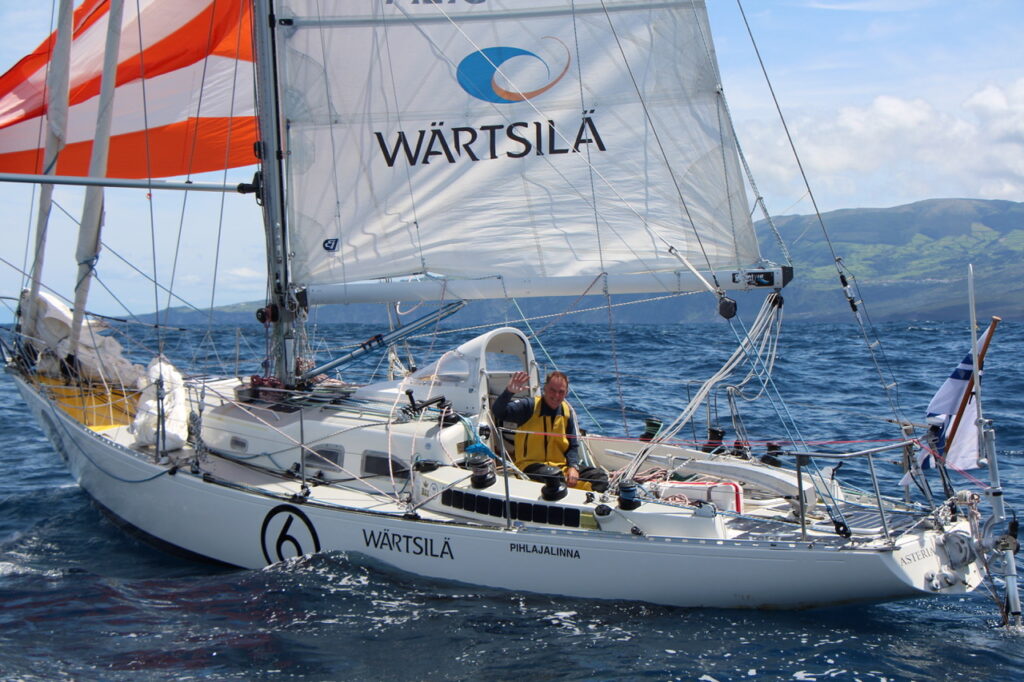 Zwei Tage sind vergangen seit dem Untergang der Asteria. Dank einer professionell koordinierten Rettungsaktion macht Tapio nun eine Kreuzfahrt nach China. Die Welt wartet derweil auf Informationen, was die Asteria zum Sinken gebracht haben könnte.
Zwei Tage sind vergangen seit dem Untergang der Asteria. Dank einer professionell koordinierten Rettungsaktion macht Tapio nun eine Kreuzfahrt nach China. Die Welt wartet derweil auf Informationen, was die Asteria zum Sinken gebracht haben könnte.
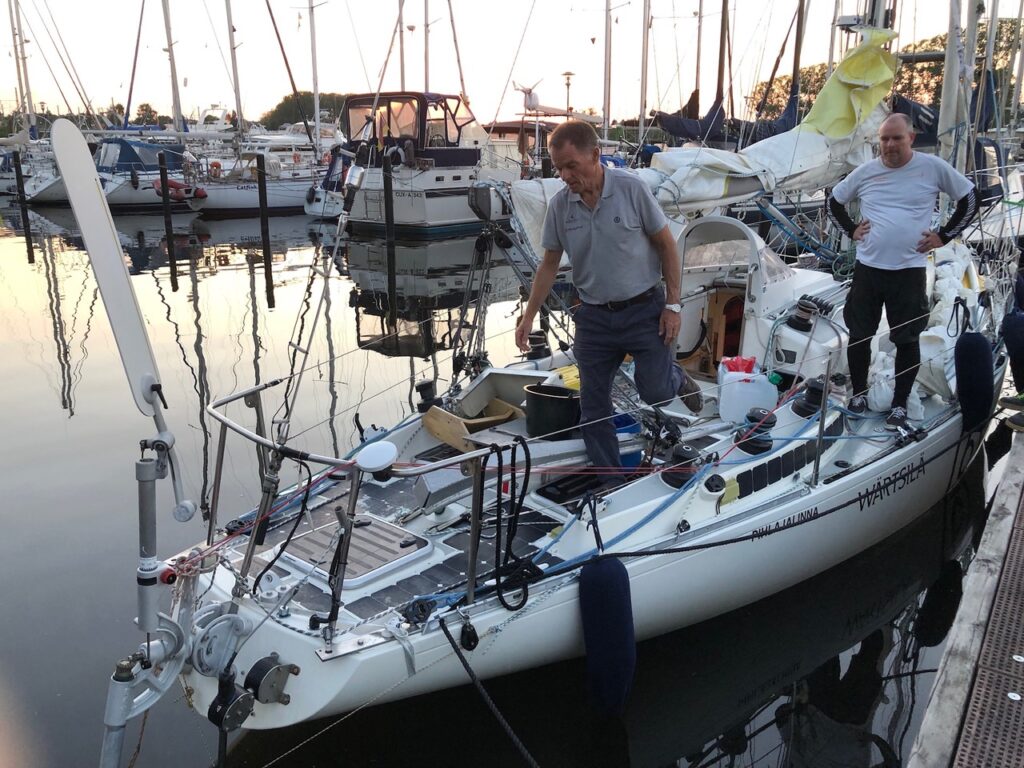 Es ist kein Geheimnis, dass ich mit Tapio in den Jahren 2016 – 2019 intensiv zusammen gearbeitet habe. Wir haben hunderte Mails gewechselt, unser persönlicher Austausch und die Zusammenarbeit waren ohne Makel, eine in toto überaus angenehme Zeit mit viel Spass auf beiden Seiten, die mir unvergessen bleiben wird.
Es ist kein Geheimnis, dass ich mit Tapio in den Jahren 2016 – 2019 intensiv zusammen gearbeitet habe. Wir haben hunderte Mails gewechselt, unser persönlicher Austausch und die Zusammenarbeit waren ohne Makel, eine in toto überaus angenehme Zeit mit viel Spass auf beiden Seiten, die mir unvergessen bleiben wird.
Vielleicht kann ich ein paar Informationen über Gründe und Ursachen beitragen, die hier Aufschluss geben könnten, was den Untergang hätte verursachen können.
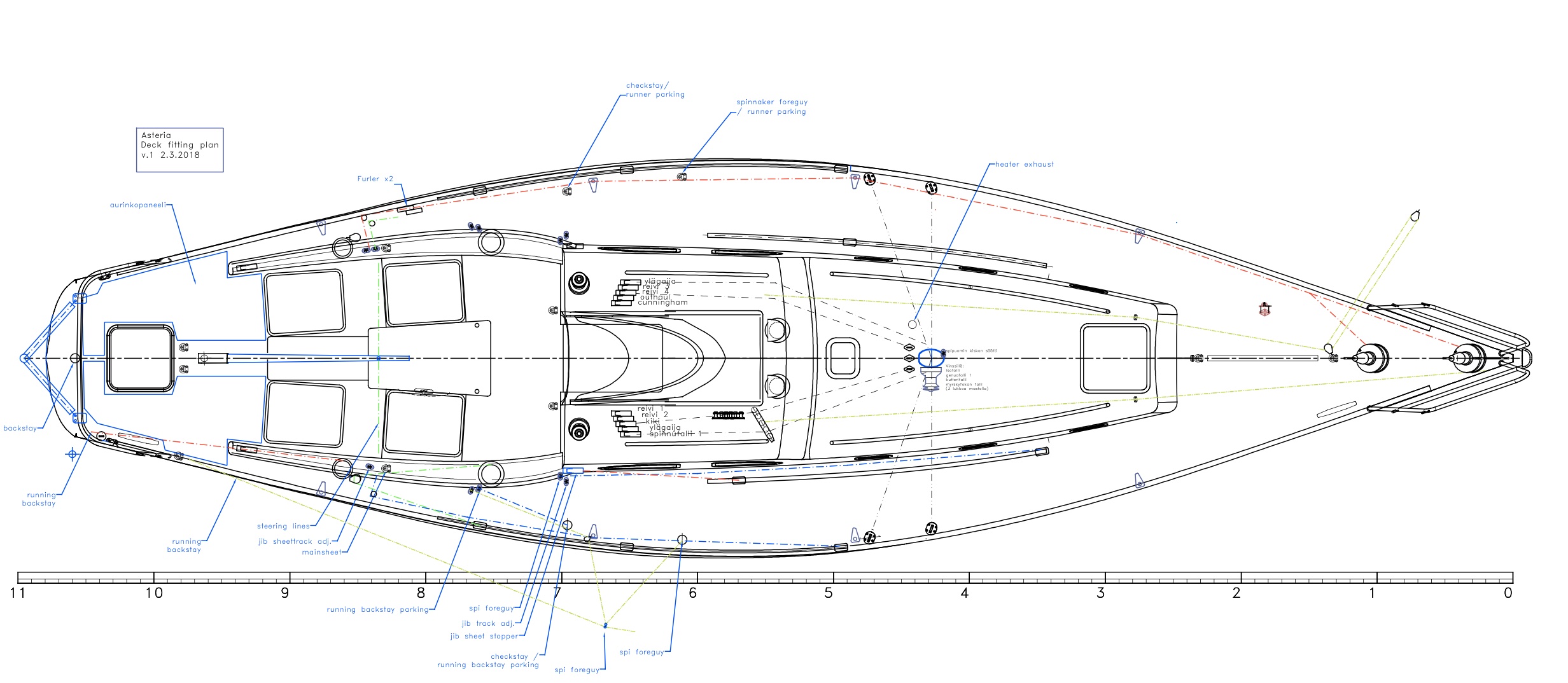
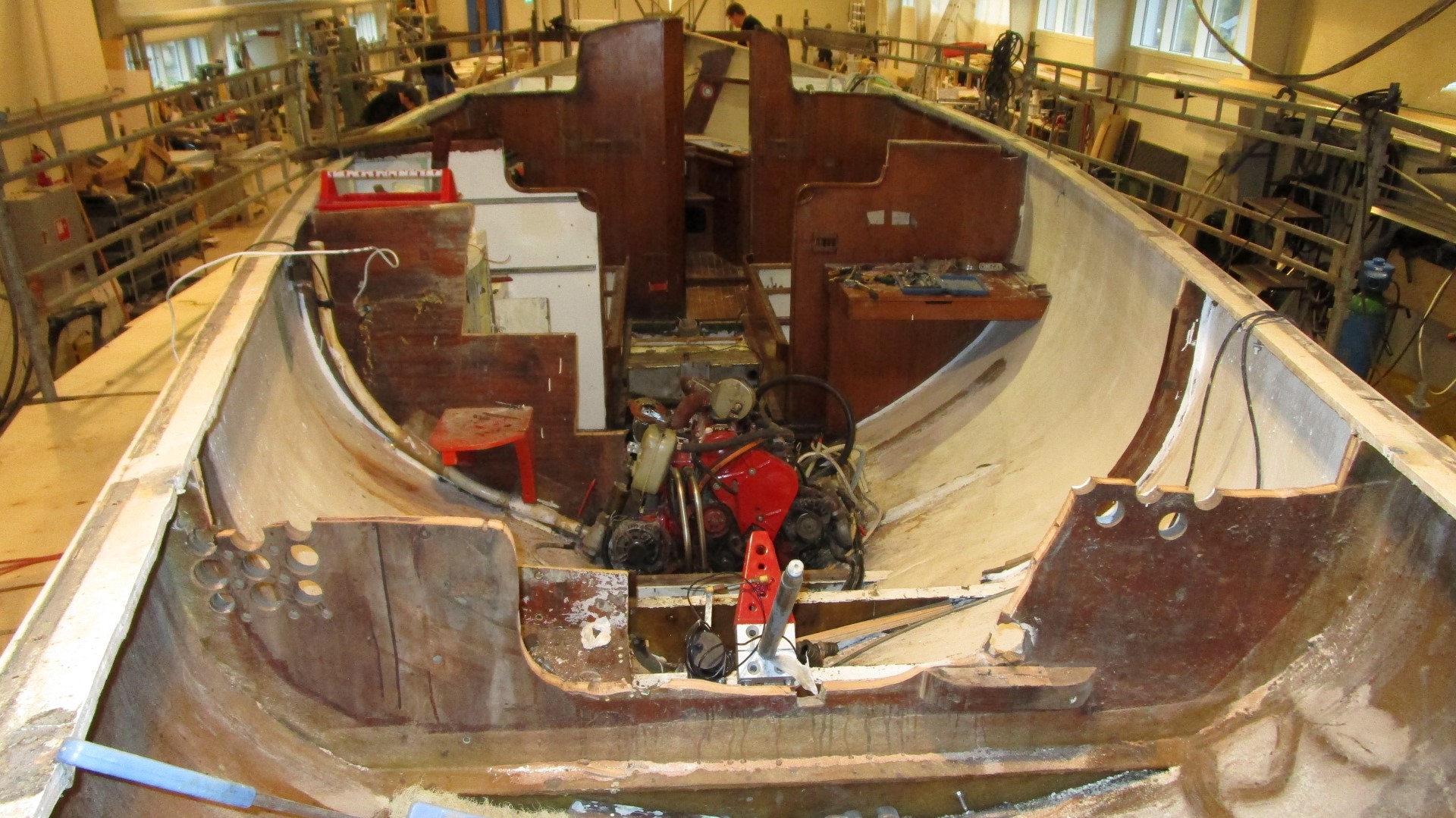
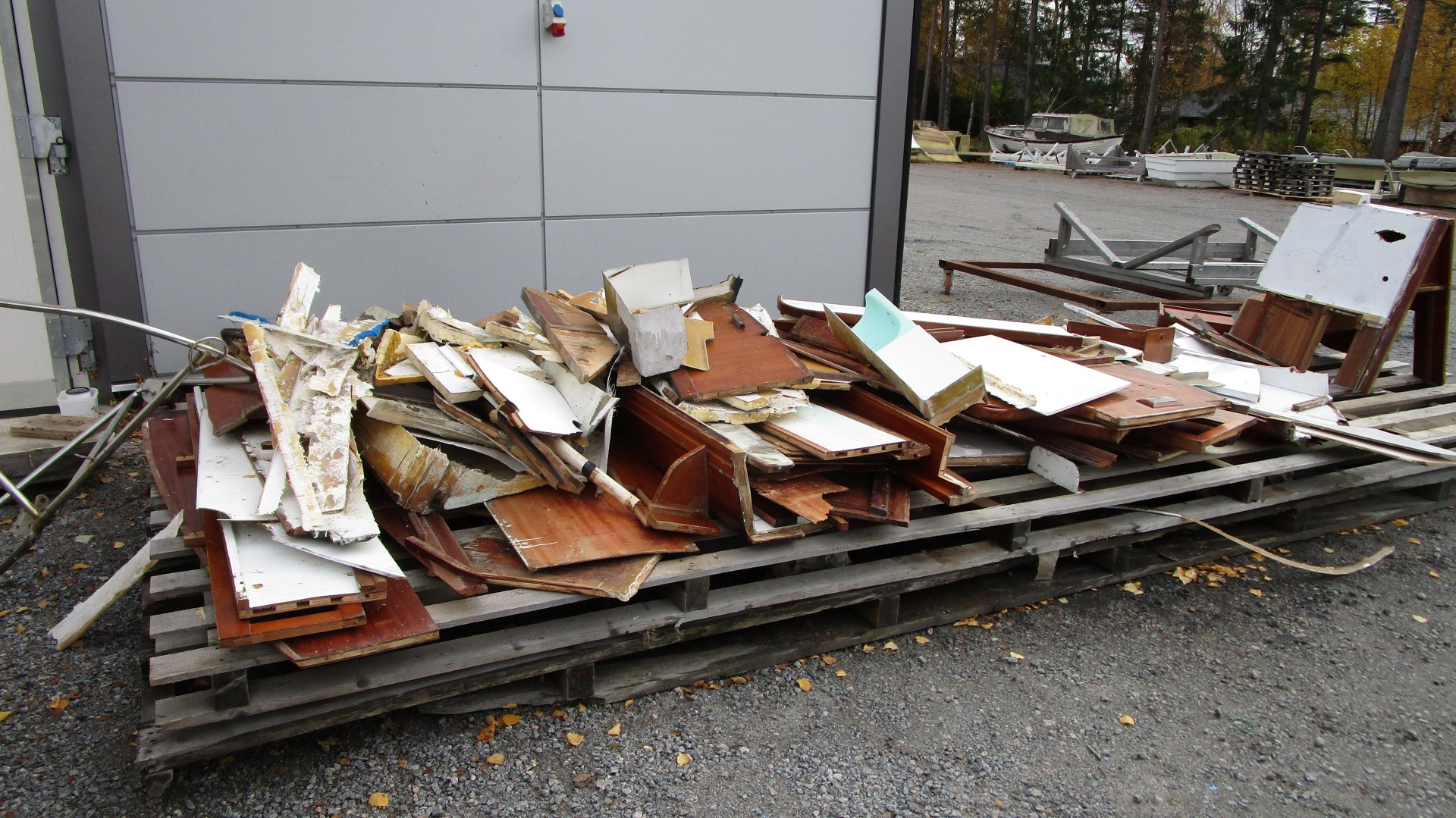
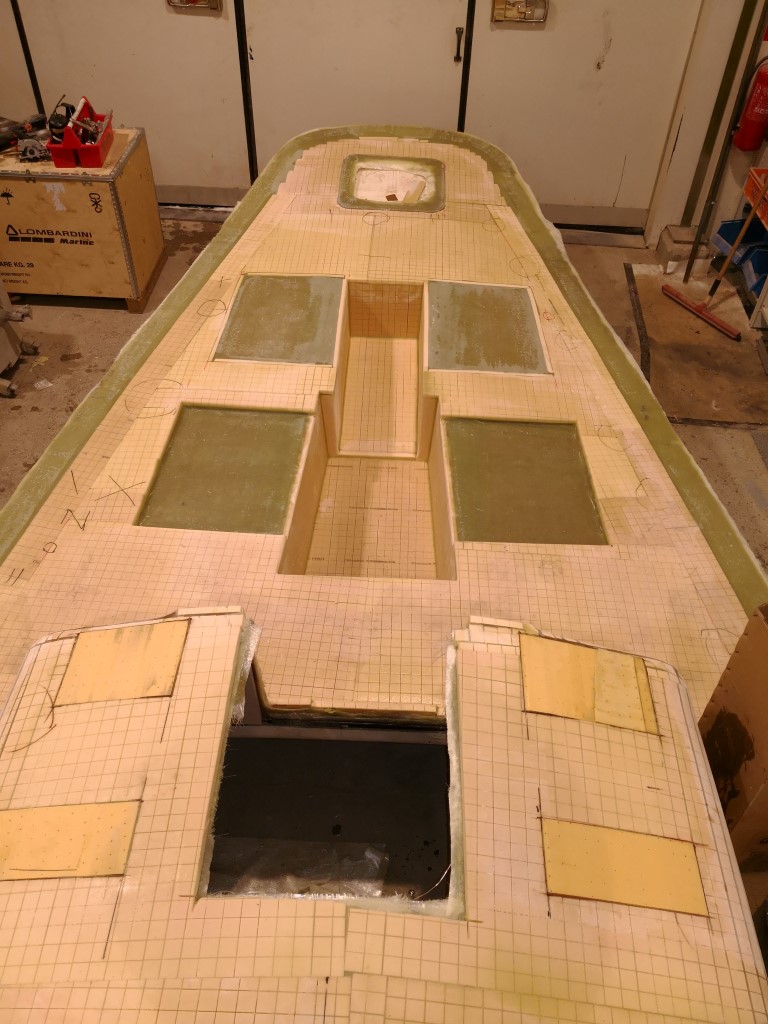
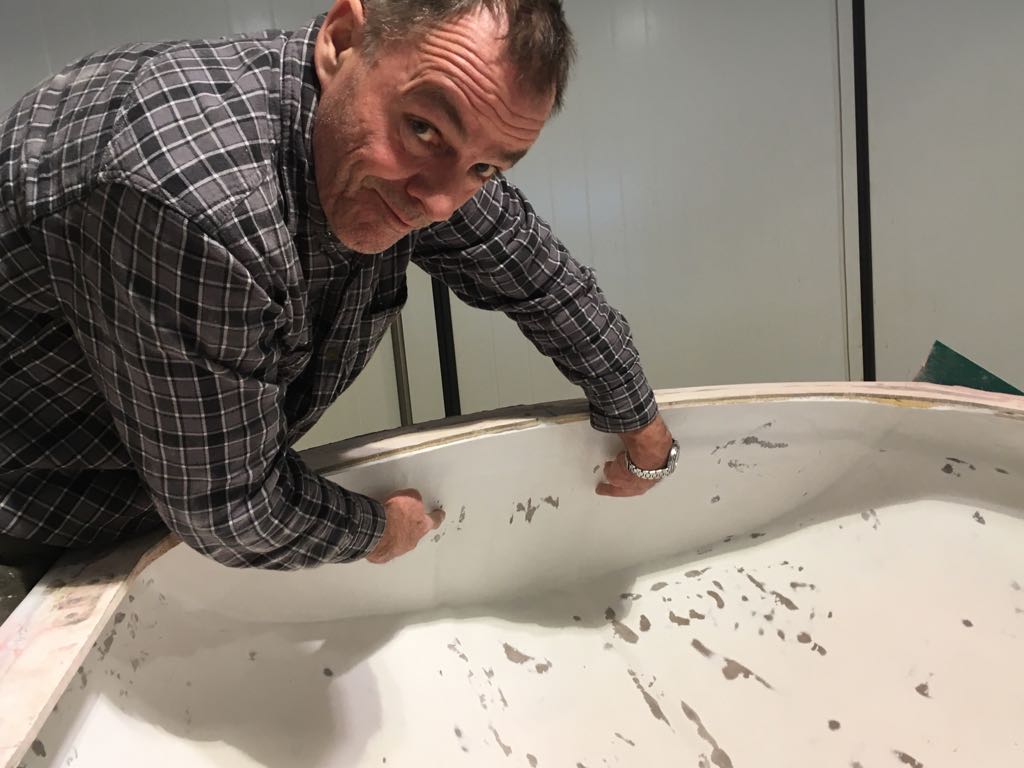
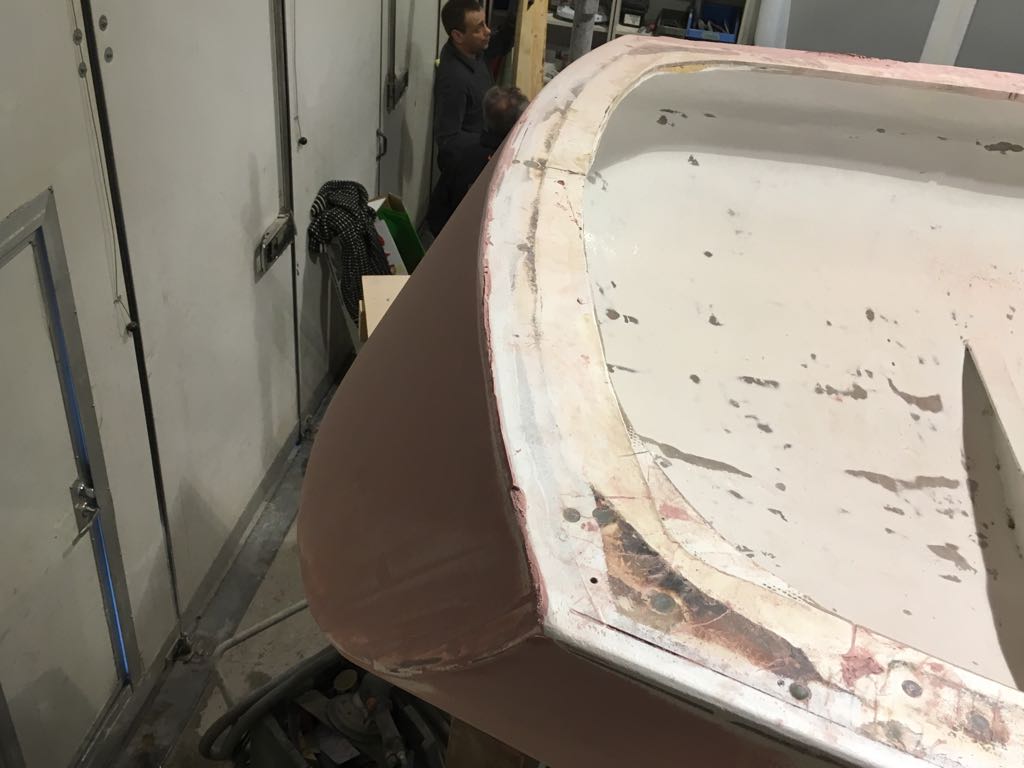
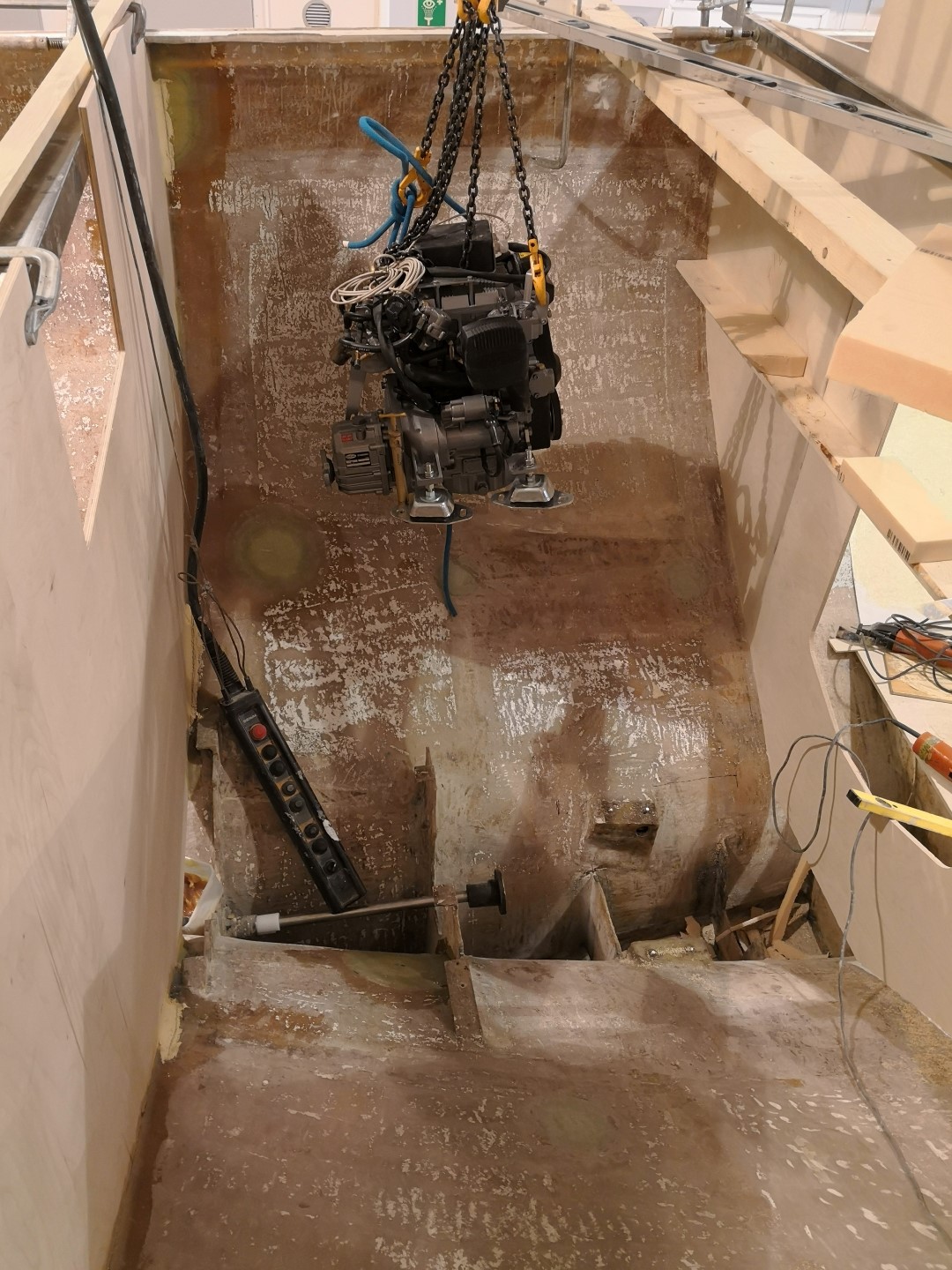
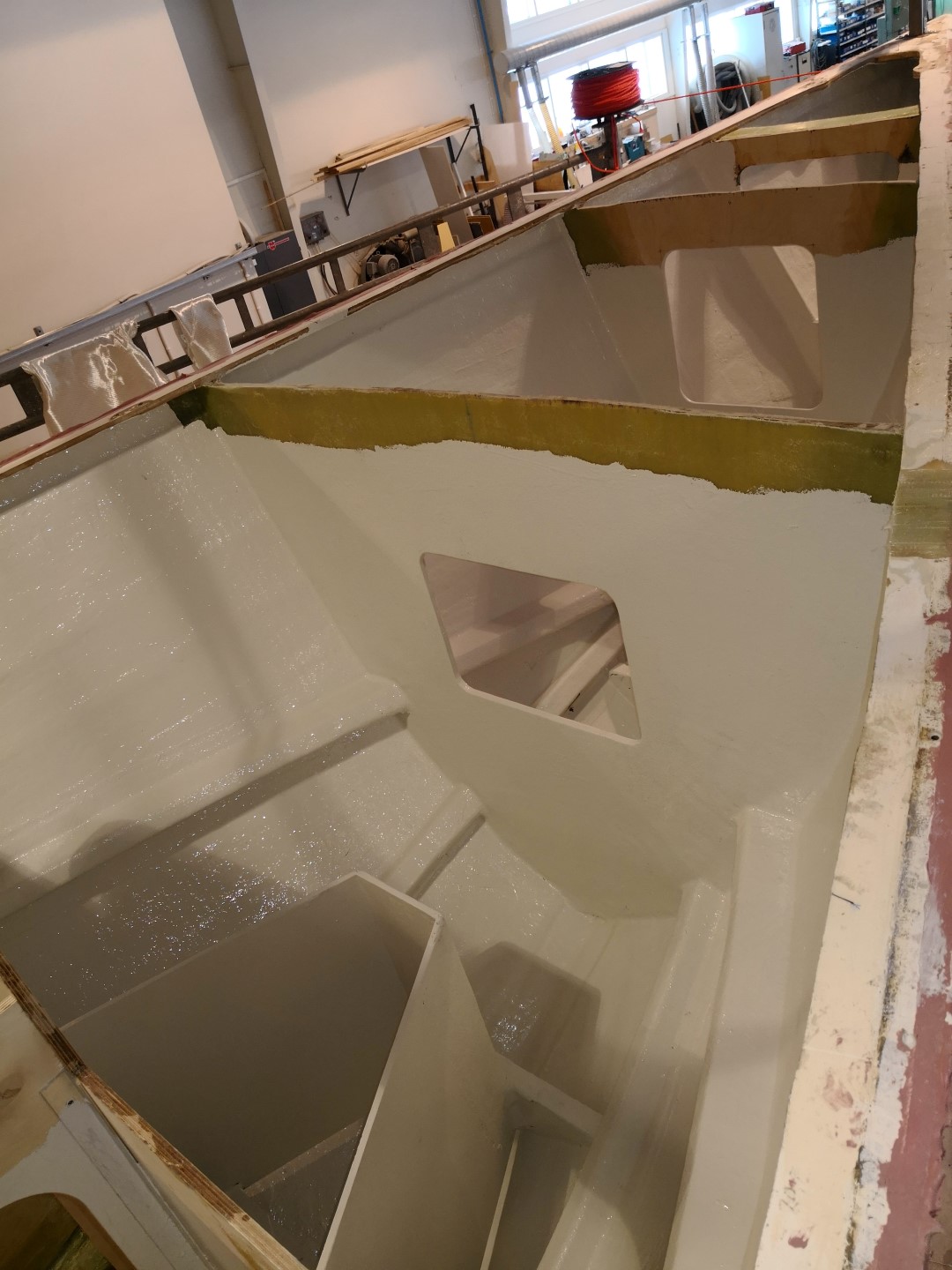
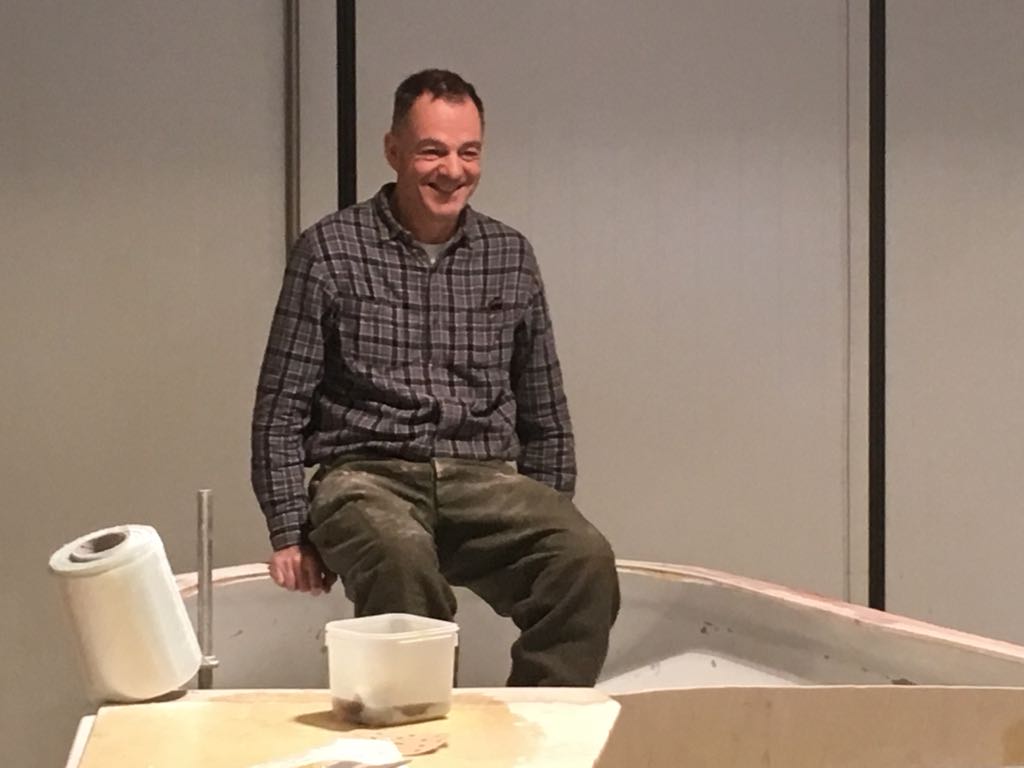
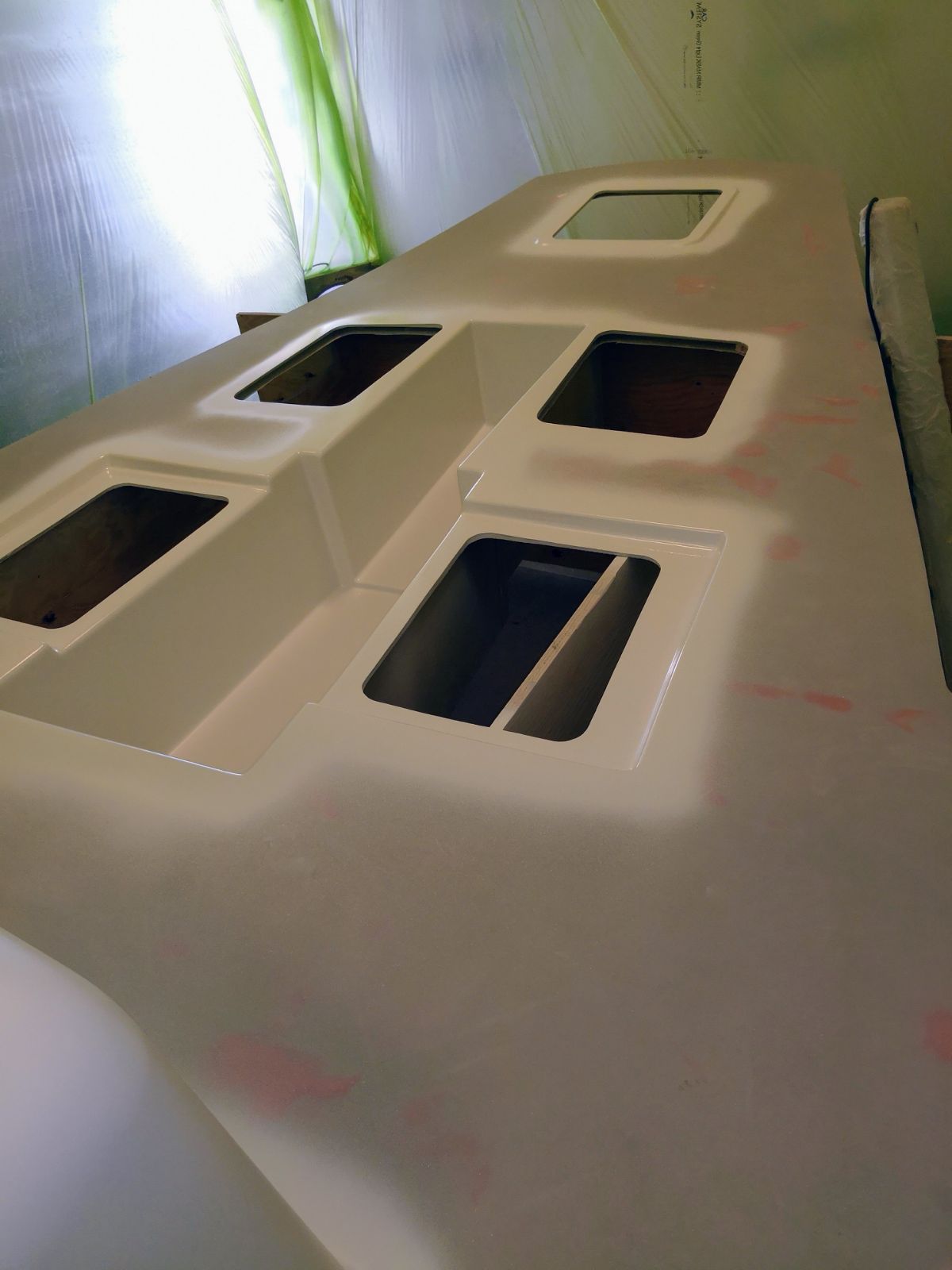
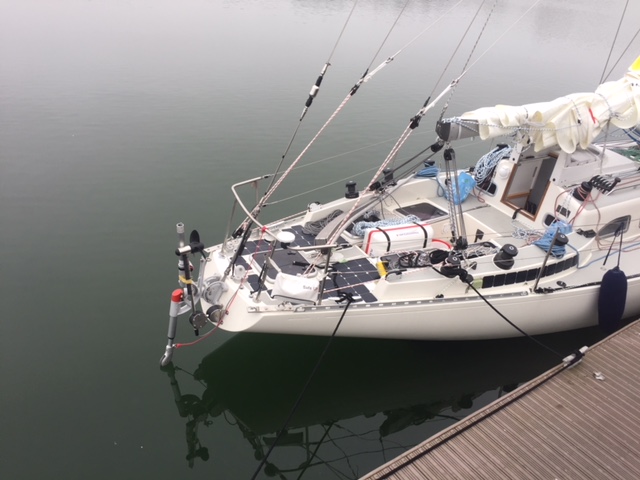
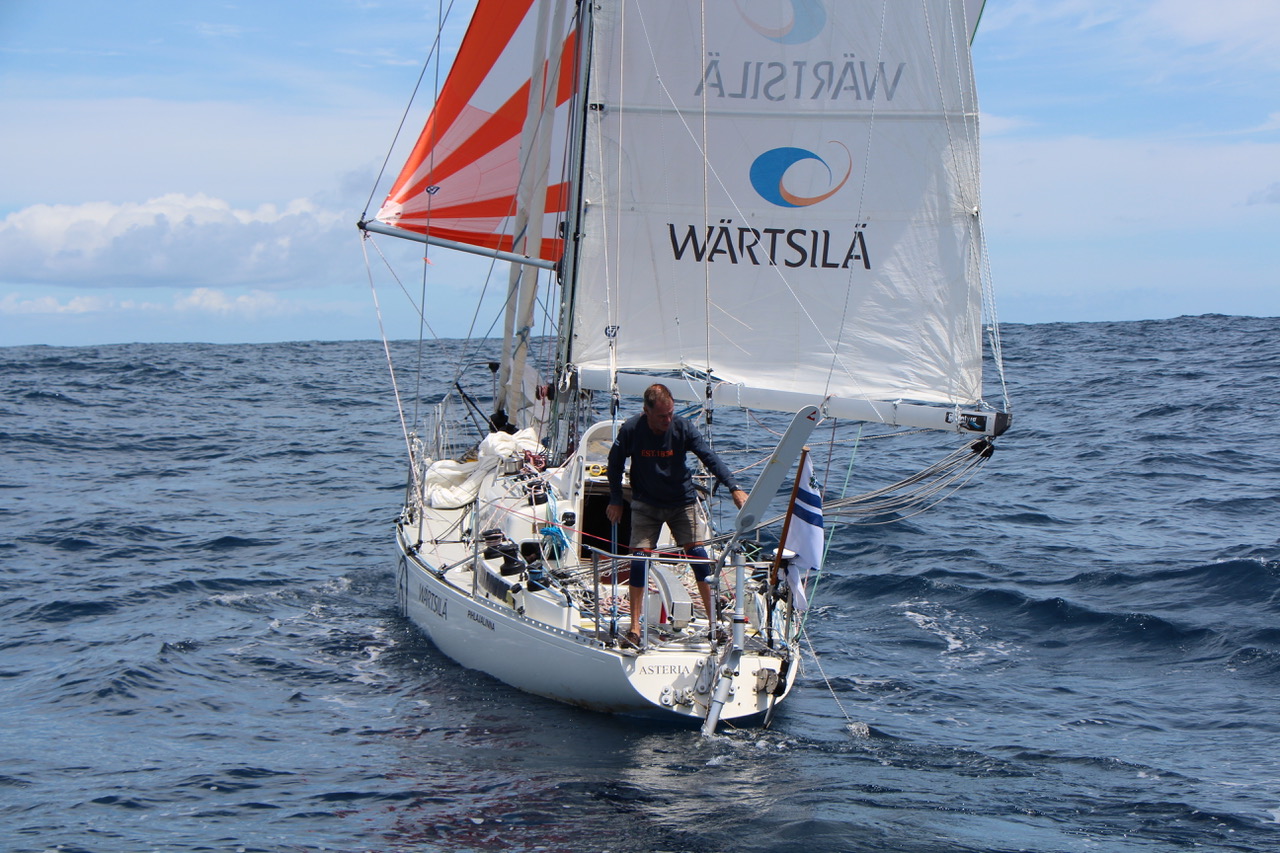 Der Umbau / Neubau der Asteria wurde vollständig dokumentiert, vermutlich wurden damals sämtliche Informationen mit dem Veranstalter der GGR kommuniziert.
Der Umbau / Neubau der Asteria wurde vollständig dokumentiert, vermutlich wurden damals sämtliche Informationen mit dem Veranstalter der GGR kommuniziert.
In Yachting World ist nachzulesen:
Besides three watertight bulkheads and foam buoyancy in the bow, Lehtinen added an additional pair of watertight bulkheads aft, which were not specified in the safety requirements of the race rules but he built in for added security. The first was just forward of the rudder tube, the second a few feet further forward. All through-hull fittings were position between the two to try and eliminate the risk of a failed skin fitting flooding the boat.
Beim Vergleich der mir vorliegenden Fotos vom Umbau der Asteria mit den heutigen Gegebenheiten, kann ich diesen Hinweis nicht verifizieren, weil sämtliche bulkheads recht offenbar eingebaut wurden, bevor das Deck aufgesetzt worden ist.
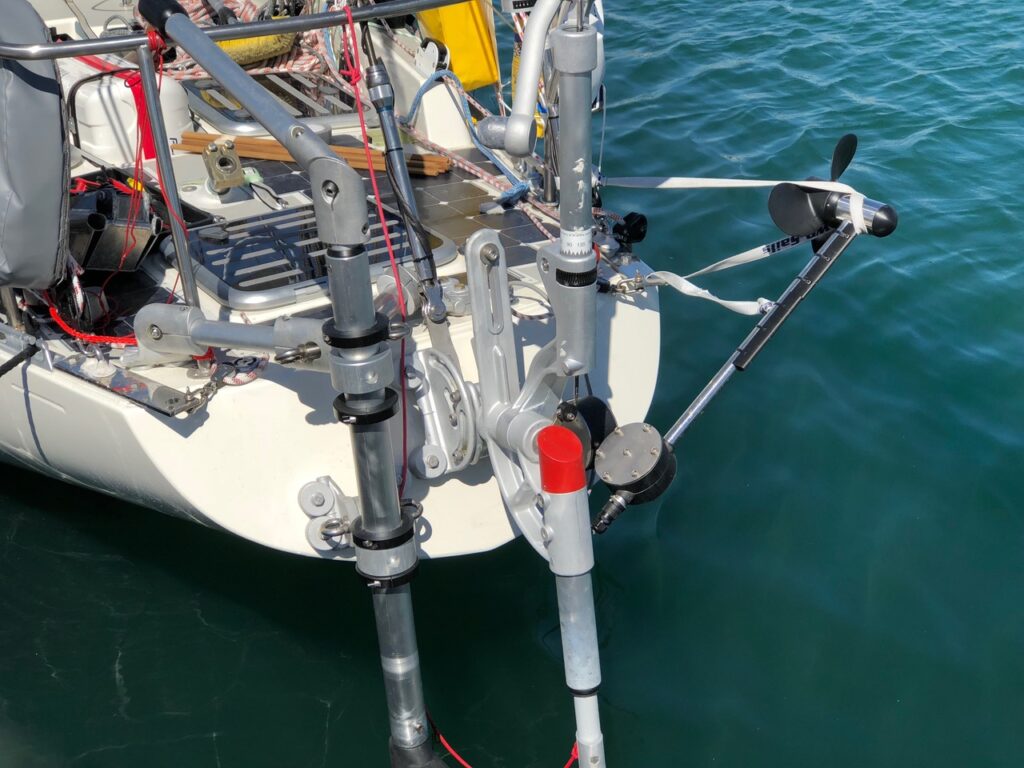
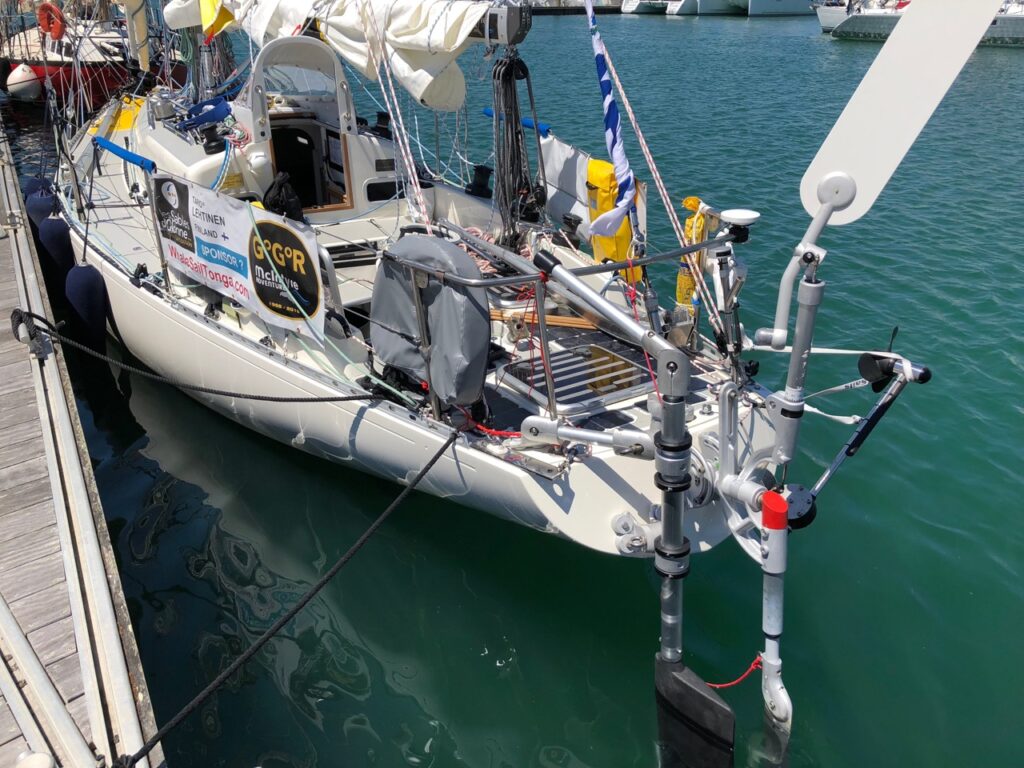 Im Heckbereich befanden sich damals neben den Beschlägen für die Windpilot Pacific, dem Pütting für das Achterstag, zwei Halterungen für einen SailingGen zur Stromerzeugung, sowie auf Backbordseite eine Halterung für ein SOS rudder, welches während der gesamten GGR 2018 allerdings unter Deck gelagert wurde.
Im Heckbereich befanden sich damals neben den Beschlägen für die Windpilot Pacific, dem Pütting für das Achterstag, zwei Halterungen für einen SailingGen zur Stromerzeugung, sowie auf Backbordseite eine Halterung für ein SOS rudder, welches während der gesamten GGR 2018 allerdings unter Deck gelagert wurde.
Sämtliche Stauräume im Achterschiff hinter dem Niedergang sind über wasserdichte Luken nur von Deck zugänglich, die unverändert auch beim Start zur GGR 2022 zu sehen sind.
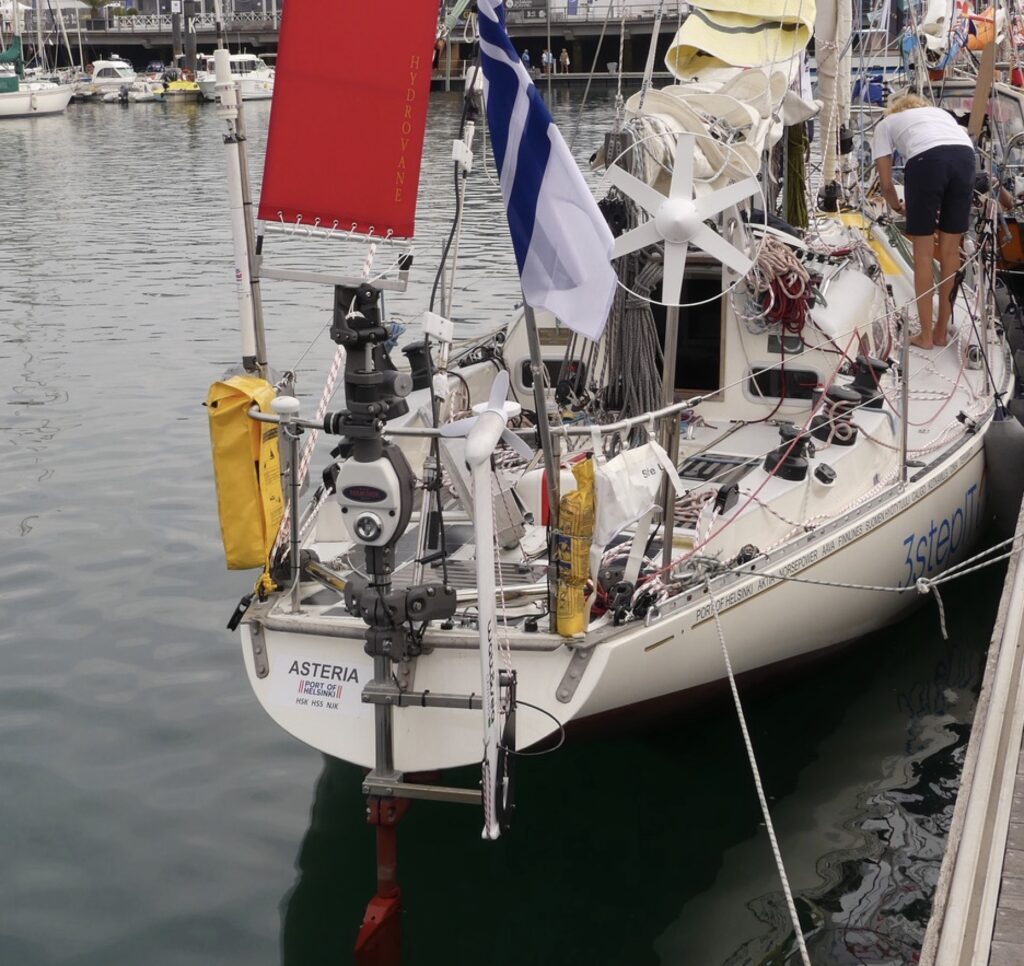 Die Windpilot Pacific im GGR 2018 wurde zum GGR 2022 durch eine Hydrovane ersetzt, einem Hilfsrudersystem, dessen ungewöhnlich hohe Belastungen am Heck von entsprechend soliden Beschläge aufzufangen sind. Die unterschiedlichen Belastungen von Servopendelrudersystemen und Hilfsrudersystemen sind hier nachzulesen
Die Windpilot Pacific im GGR 2018 wurde zum GGR 2022 durch eine Hydrovane ersetzt, einem Hilfsrudersystem, dessen ungewöhnlich hohe Belastungen am Heck von entsprechend soliden Beschläge aufzufangen sind. Die unterschiedlichen Belastungen von Servopendelrudersystemen und Hilfsrudersystemen sind hier nachzulesen
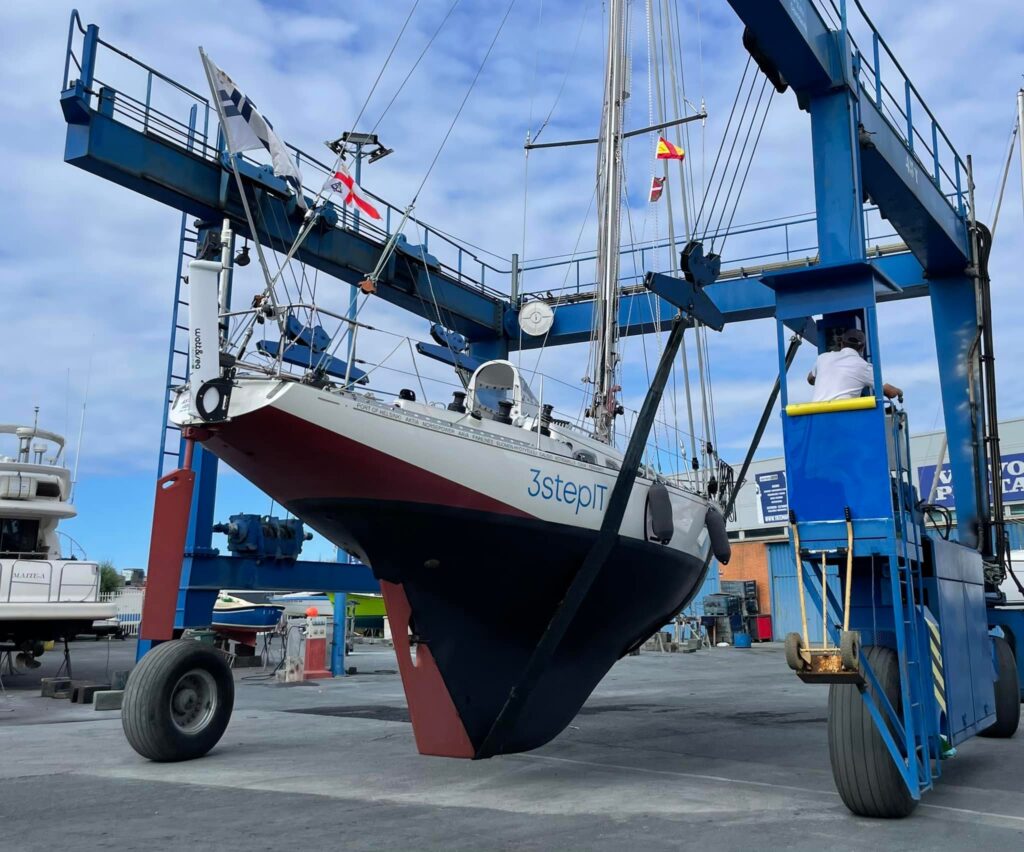
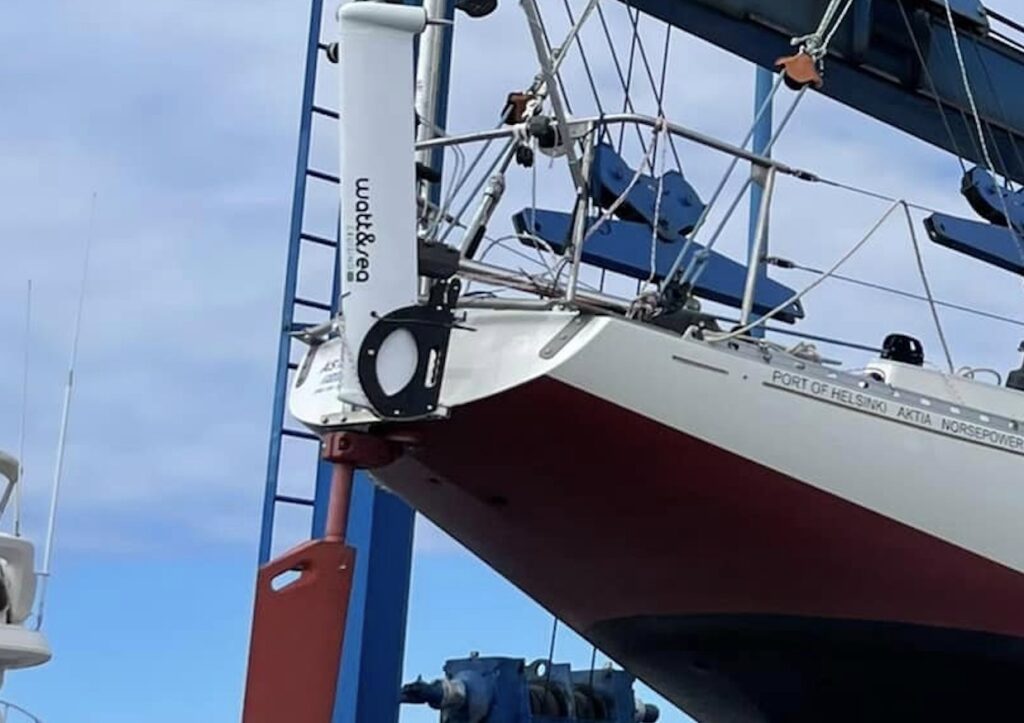 Es ist naheliegend, dass mit zunehmenden Abständen zwischen unterer und oberer Befestigung von Hilfsrudersystemen am Rumpf die Lasten besser auf das Schiff zu übertragen sind. Die Besonderheit der Asteria allerdings liegt in dem aussergewöhnlich geringem Freibord des Schiffes. Der Spiegel des Schiffes misst in seiner Höhe nur ca 40 cm auf. Die Unterkante des Spiegels im Hafen befindet sich ca 30 über der WL. Diese Überlegungen haben vermutlich dazu geführt, dass man den unteren Befestigungspunkt der Hydrovane UNTER dem Schiff befestigt hat, anstatt am Spiegel. Dies birgt zusätzliche Herausforderungen / Komplikationen:
Es ist naheliegend, dass mit zunehmenden Abständen zwischen unterer und oberer Befestigung von Hilfsrudersystemen am Rumpf die Lasten besser auf das Schiff zu übertragen sind. Die Besonderheit der Asteria allerdings liegt in dem aussergewöhnlich geringem Freibord des Schiffes. Der Spiegel des Schiffes misst in seiner Höhe nur ca 40 cm auf. Die Unterkante des Spiegels im Hafen befindet sich ca 30 über der WL. Diese Überlegungen haben vermutlich dazu geführt, dass man den unteren Befestigungspunkt der Hydrovane UNTER dem Schiff befestigt hat, anstatt am Spiegel. Dies birgt zusätzliche Herausforderungen / Komplikationen:
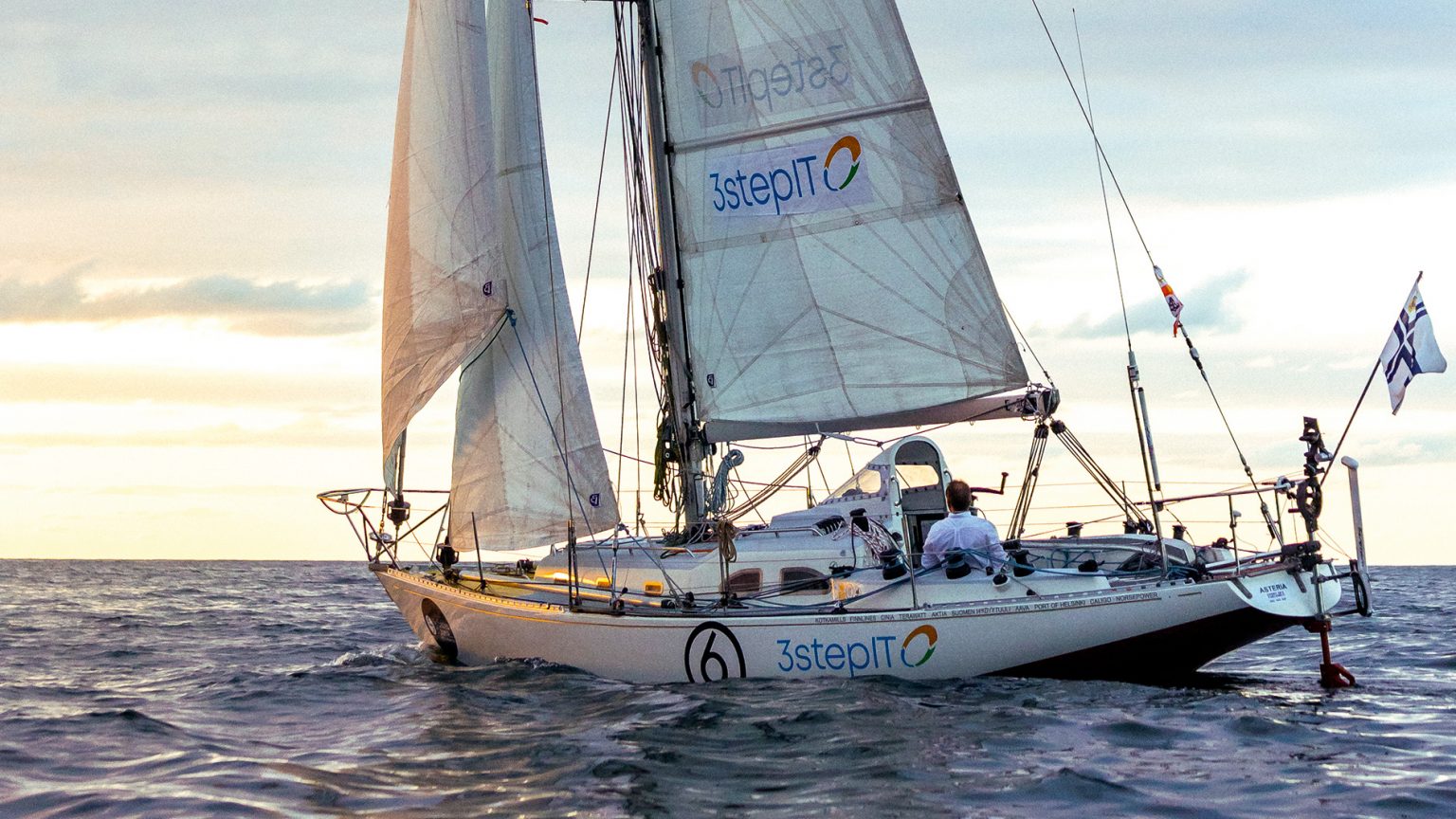
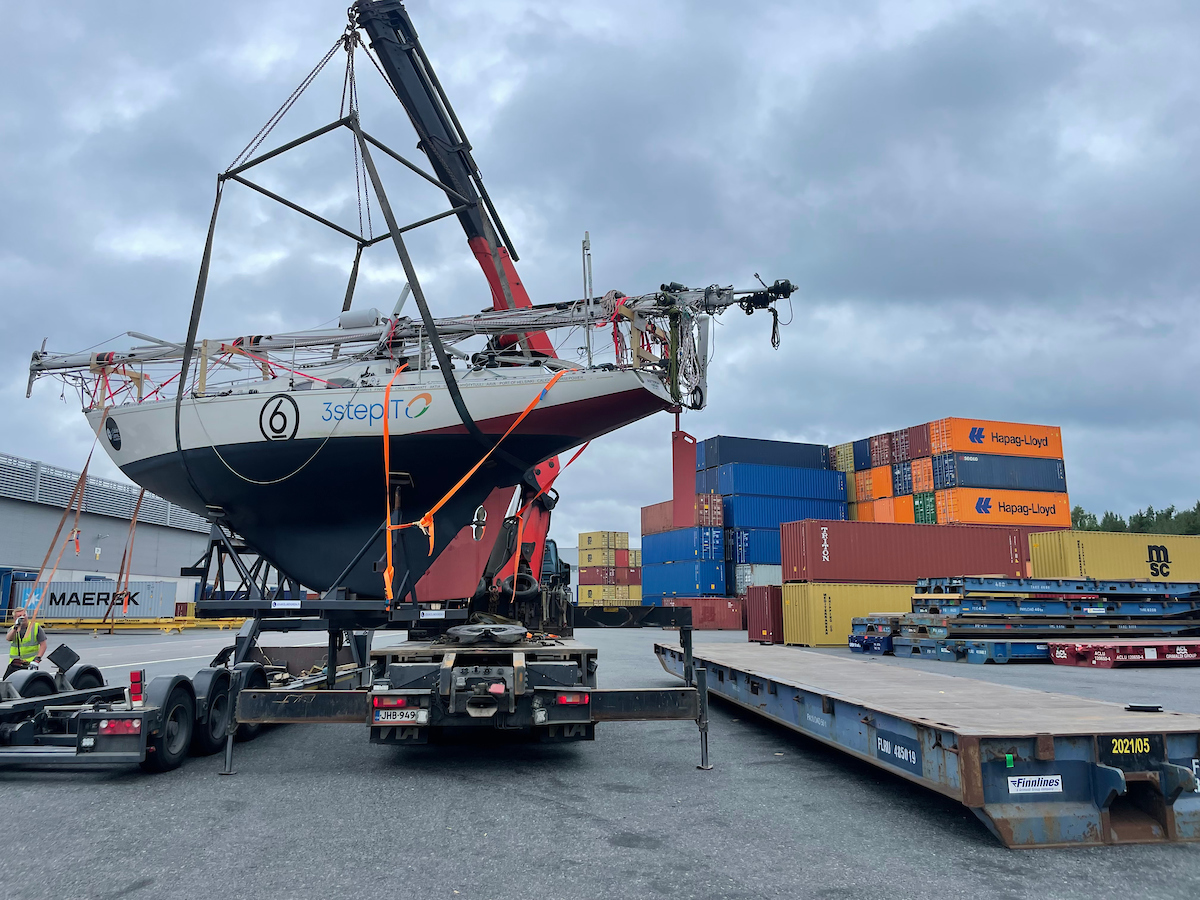
1.- Das Rumpflaminat unterscheidet sich nahezu bei allen GFK Schiffen von der Laminatauslegung der Spiegelfläche, es ist in der Stärke geringer ausgelegt, weil der Spiegel zur Aufnahmne von Lasten durch das Rigg i.e. dem Achterstag meist stärker auszulegen ist.
2.- Der Abstand zwischen der vertikalen Achse des Hydrovane Ruderschaftes bis zur Befestigung unter dem Rumpf vergrössert sich, weil der Befestigungsflansch horizontal anstatt vertikal ausgerichtet ist. Damit entstehen zusätzliche Hebelkräfte die von den beiden vertikalen M10 Bolzen auf das Laminat übertragen werden müssen.
3.- Die Befestigungsbolzen der Beschläge ( normalerweise M10, d.h. Kern von 8,5 mm ) befinden sich somit um 90 Grad verdreht zur Lastrichtung, werden also auf Scherkraft belastet.
4.- Die Rumpfunterseite stellt keine plane Fläche dar, sie ist „aufgekimmt“ was eine keilförmige Unterfangung der ansonsten planen Befestigungsbrackets der Hydrovane erforderlich macht.
5.- Die gesamte untere Befestigung der Hydrovane liegt bei Fahrt des Schiffes nahezu regelmässig unter Wasser, weil die dynamische WL bis an die Unterkante des Spiegel ansteigt, dem Grund, warum das Antifouling achtern bis zur Unterkante des Spiegel hochgezogen wurde.
6.- Im Gegensatz der im YW Bericht geäusserten Darstellung „All through-hull fittings were position between the two .. bulkheads“ befinden sich die Befestigungsbolzen – through-hull fittings – des unteren Beschlages der Hydrovane ausserhalb dieses Bereiches.
Bei der Betrachtung der Asteria Konfiguration sind folgende Details zu bedenken:
1.- Der Krafthebel des Hydrovane Hilfsruders von der Unterkante des Hilfsruders bis zur unteren Befestigung am Rumpf liegt vermutlich im Bereich von 130 cm
2.- Der Abstand zwischen einer unteren und zwei oberen Befestigungsstreben beträgt im Bereich von 40 – 50 cm.
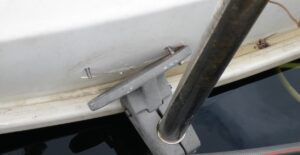
plane brackets fitted with 2 M10 bolts
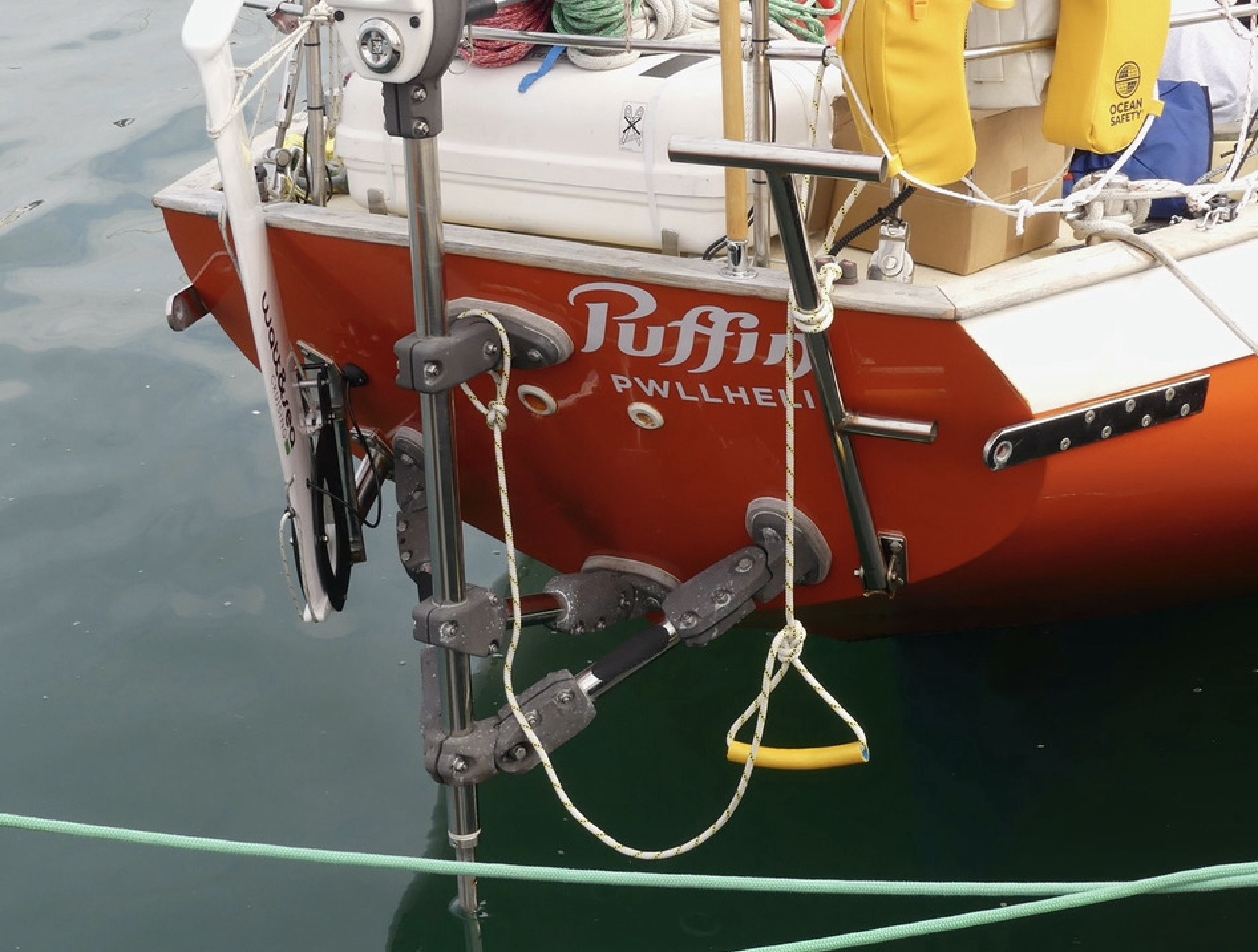 Zum Vergleich: auf der PUFFIN ist die untere Befestigung doppelt ausgeführt.
Zum Vergleich: auf der PUFFIN ist die untere Befestigung doppelt ausgeführt.
Ich hielte es für durchaus denkbar, dass die enormen Hebelkräfte der Hydrovane an der Asteria konstruktiv nicht genügend haben aufgefangen werden können, in deren Folge, und nach einer gesegelten Distanz im Bereich von 8000 SM die Befestigung des Systems unter dem Schiffsheck, dann das ganze System in Bewegung geraten sein und bei zunehmender Lose am Ende dann ein Loch in den Rumpf gerissen haben könnte, was bei dem geringen Freibord des Schiffes Ursache für den fatalen Untergang gewesen sein könnte.
Tapio hat mit eigenen Worten „I woke up to a loud bang“ geschildert. Dies könnte hervorgerufen worden sein, als sich das Hilfsrudersystem vom Spiegel respektive Rumpf losgerissen und dabei ein Loch im Rumpflaminat hinterlassen hat, gross genug, um ein Schiff innerhalb weniger Minuten zum Sinken zu bringen.
Ich möchte diesen Bericht als Versuch einer vorsichtigen Analyse verstehen. Sicherlich wird Tapio demnächst eine detaillierte Schilderung seiner Einschätzung der Situation abgeben, die ich sodann gerne als Ergänzung meines Berichtes erfassen werde.
UPDATE 21.november 2022. hier ein Bericht von Tapio in finnischer Sprache Tapio vermerkt darin, dass es keine Kollision gegeben habe.
UPDATE 22.november 2022 from Finland is being reported that obviously Tapio told the Finnish broadcasting campany Yle, that the bang might have been the aft bulkhead collapsing.
UPDATE 23.november 2022
My sense is therefore is that while the steering system attachment theory has some merit, it is more likely that there are multiple factors involved, and that those may or may not include the self-steering system.
As a side note, in the IOR/RORC days, high backstay tensions were capable of “banana’ing” a boat. This typically resulted from over tensioning the backstay and pulling up on the transom. This forced the topsides outward sheering the hull to deck joint and tearing the tabbing on the bulkheads. While it does not seem likely that this is the cause of the sinking, it is possible that something similar damaged the bond between the bulkheads and the hull. But this last comment is wild conjecture on my part,
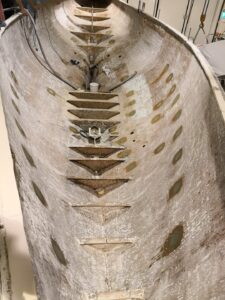
Vermutlich wird Tapio hier Antworten geben können. Die Asteria wurde für das GGR 2018 mit einem besonders stark dimensioniertem neuen Mast samt verstärkten Wanten ausgerüstet, wohingegen in der Rumpfschale vermutlich im Achterschiff keine Längsstringer vorhanden bzw. vorgesehen wurden, wie auf Fotos zu erkennen ist. Somit wäre vermutlich durchaus denkbar, dass die von Jeff Halpern hier angestellte Vermutung zutreffen könnte.
UPDATE 24.november 2022
TAPIO EXPLAINS ASTERIA
UPDATE 28. NOVEMBER 2022 – PETERS COMMENT
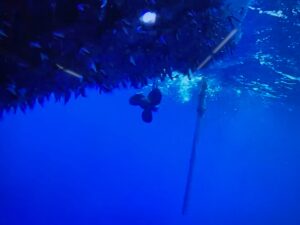
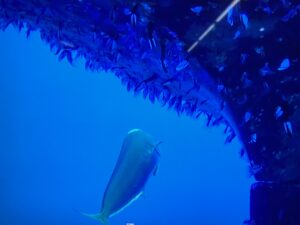
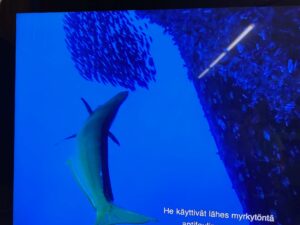
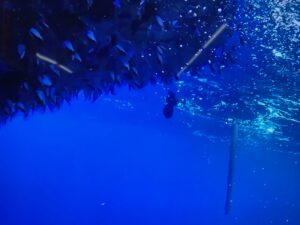
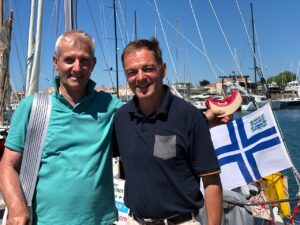 Im Juni 2019 habe ich Tapio in Rendsburg getroffen. Bei einem Glas Champagner in der Abendsonne haben wir unsere Gedanken schweifen lassen. Tapio war bereits fest entschlossen, seiner Asteria die gleiche Reise noch einmal ohne Muschelbegleitung anzubieten. Vermutlich war der Regattasegler in ihm seine Peitsche. Fast wirkte er traurig, dass er keine schweren Stürme zu bestehen hatte. Erinnere ich mich richtig, dass er auch gerne einmal eine Kenterung hätte bestehen wollen? Skipper und Schiff jedenfalls erschienen als Einheit, Tapio´s uneingeschränktes Vertrauen wirkte ansteckend: Schiff und Rigg kugelsicher. Es hätte alles klappen können! Hat es aber nicht!
Im Juni 2019 habe ich Tapio in Rendsburg getroffen. Bei einem Glas Champagner in der Abendsonne haben wir unsere Gedanken schweifen lassen. Tapio war bereits fest entschlossen, seiner Asteria die gleiche Reise noch einmal ohne Muschelbegleitung anzubieten. Vermutlich war der Regattasegler in ihm seine Peitsche. Fast wirkte er traurig, dass er keine schweren Stürme zu bestehen hatte. Erinnere ich mich richtig, dass er auch gerne einmal eine Kenterung hätte bestehen wollen? Skipper und Schiff jedenfalls erschienen als Einheit, Tapio´s uneingeschränktes Vertrauen wirkte ansteckend: Schiff und Rigg kugelsicher. Es hätte alles klappen können! Hat es aber nicht!
Die Asteria hat vermutlich jedem Betrachter Ehrfurcht eingeflösst, denn der mächtige Mast mit enorm starker Verstagung hat keine Gedanken aufkommen lassen, wie diese Kräfte denn in den Rumpf eingeleitet bzw. getragen wurden? Kann es sein, dass auch Tapio bzw. seine Berater in Finland diesen elementaren Aspekt ein wenig aus den Augen verloren haben? Ein schlanker Rumpf ganz ohne Längsstringer im Achterschiff wirft angesichts des Untergangs nun allerdings, exakt diese Fragen auf.
Mit den Erkenntnissen von heute würde ich den Untergang der Asteria als ungeheures Glück für Tapio betrachten, denn der Untergang geschah bei ruhigem Wetter, und Hilfe war schnell zur Stelle. Tapio wurde gerettet, sein Leben geht weiter. Vermutlich wäre das Überleben dieses Soloseglers bei schwerem Wetter oder gar bei einer Kenterung kaum denkbar gewesen, weil die Asteria innerhalb von Minuten kollabiert und untergegangen wäre. Die Bergung des Skippers hätte dann zur Herausforderung werden können.
Auch für den Veranstalter wäre ein anderer Ausgang dieser Katastrophe mit verheerenden Folgen belastet, denn eingespielte professionelle Massnahmen könnten versagen, wenn die Grundsubstanz eines Schiffes nicht genügend bedacht wurde.
So gesehen ist die Rettung für Tapio auch für Don ein Segen, ein Glück, das man nicht auf die Probe stellen sollte, wie ich finde.
Hamburg 28.11.2022
Peter Foerthmann
INFORMATIONEN ÜBER DON MCINTYRE UND WINDSTEUERSYSTEME IM GGR
WARUM NUR ZWEI WINDPILOT SEGLER IM GGR 2022?
Nach bestem Wissen niedergeschrieben.
Hamburg 20.11.2022
Peter Foerthmann






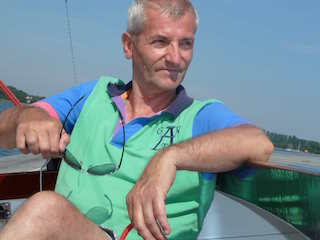

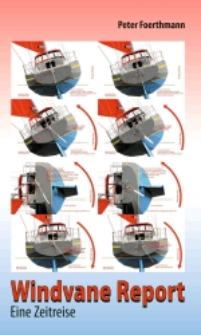


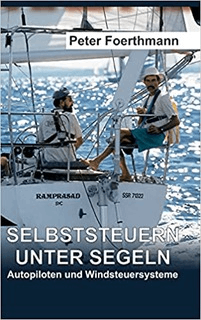
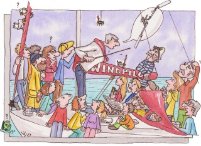
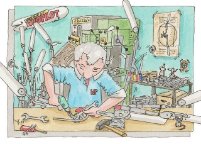
















Ein sehr interessanter und gut durchdachter Beitrag zu diesem Rätsel.
Wie so oft legt Herr Förthmann hier seine lebenslange Erfahrung, sein technisches Detailwissen und scharfes Nachdenken zu Tage.
Die detaillierte Aufklärung dieser Katastrophe, wie auch die prekären Ereignisse an Bord der PRB von Damien Guillou, sind alternativlos.
Gruß
Oliver Schönrock
Peter Förthmann hat mal wieder mit überragender Sachkenntnis und ohne subjektive Perspektiven die Situation analysiert.
Es ist mir völlig unverständlich wie man ein Boot mit einem solch grazilen „Entenarsch“ für eine derartig herausfordernde Weltumsegelung auswählen kann. Kein Zufall, dass im letzten Rennen eine Rustler gewonnen hat.
Brillant description (with perfect pictures) of the most probable reason for the “bang” and fast sinking. The question which remains for Tapio, is whether there were any kind of “warning signals” during the 8000nM voyage till that moment (sounds, vibrations etc). Thank you!
Maybe the prop? Some cruisers prefer a fixed with three blades which create a lot of pressure compared to folding. If a fixed is left running the coupling shaft to engine might get loose. Pity with Tapios good-looking boat.
Excellent theory breakdown and quite plausible.
Hydrostatic pressure created behind the aft bulkhead is relatively small, so likelihood of bulkhead collapsing instantly is small. It is above static waterline and mainly above dynamic waterline – even when full water or heeling. Also the area where the lower support is attached is having significant strength due to molding process in two parts. Of course having an issue at the same time, two parts. I bet that these have been checked on refit. If hydrovane lower support would have been ripped of from the bottom and leaving a hole, hydrovane would not been steering. Vane would not been standing there at all, hopefully Tapio remembers if that have been missing. So yes, a risky position – small distances between attachments, but at least I have hard times to believe that would have caused such an instant inrush of water. That would require 4-8″ hole somewhere closer to engine compartment.
While the theories about the failure of the attachment of the windvane/ auxiliary rudder system are entirely plausible, that theory cannot be the entire story. The reason that I say that is that there were two watertight compartments between the transom and the cabin. It seems to me that if the steering system tore off a piece of the transom and bottom, simply breaching those areas would have only flooded the aft waterproof compartment.
Even if it is assumed that the transom and counter were breached massively, the vertical height of the water in the aft compartment would be limited to the distance between the breach and the low point of the hull, which (judging by the pictures) is perhaps 30-40 cm. And while there would be some free surface affect, with the bulkhead perhaps a meter or so forward of the transom, it is hard to imagine frees surface effect generating enough force to blow out the two watertight bulkheads if they were reasonably well constructed (which aft bulkhead appears to be in the photo).
More to the point, assuming the theory stated above is correct, without breaching both watertight bulkheads, I respectfully suggest that the boat could not sink that quickly even if it lost a large chunk of its transom and bottom within the after compartment.
My sense is therefore is that while the steering system attachment theory has some merit, it is more likely that there are multiple factors involved, and that those may or may not include the self-steering system.
As a side note, in the IOR/RORC days, high backstay tensions were capable of “banana’ing” a boat. This typically resulted from over tensioning the backstay and pulling up on the transom. This forced the topsides outward sheering the hull to deck joint and tearing the tabbing on the bulkheads. While it does not seem likely that this is the cause of the sinking, it is possible that something similar damaged the bond between the bulkheads and the hull. But this last comment is wild conjecture on my part
The HV attachment is the most obvious weak spot here, in what is otherwise a very strong boat.
The short distance between top and bottom bracket, the huge vertical lever to the bottom of the HV rudder and the extra lever forward (!!) to the attachment point of the bottom bracket all work together to create enormous moments/forces, which have to be absorbed by just 2 x M10 bolts and the surrounding laminate.
This is a very confined area as well, which provides only very limited access (without taking the boat apart) to install backing plates and strengthening of laminate etc as is recommended in the HV manual!
This looks like an accident waiting to happen?
Oliver Schönrock
There were 2 watertight compartments in stern of Asteria. Bulkheads do not fail very easily, they are simple and easy to use, with no moving parts. We find them in all boats, so theres no lack of data points. If the leak would be in the transom and in the fastening points of the HV, would it have to break through not only one, but two watertight bulkheads? Normally boat like Asteria would happily sail on with the last watertight compartment filled with water and racing sailor like Tapio would definetely sense it in the movements of the boat, if there suddenly would be couple hundred kilos of extra weight in the back. Also the last compartment was in the light winds completely over the waterline, so if there would have been a leak in the bottom, it would also have drained out in the light winds. Only way to fill it completely is from the top. I really dont see this happening due to the HV failure.
Another thing is that saloon filled up quickly (5min), but the last stages of the event took 20min with the waterline decklevel. We know for sure that the saloon was flooded. If all the compartments in the stern would have failed the boat would have gone under in one go. The fact that boat went under stern first might be just because the compartments in the bow were bigger and they were not finally big enought to keep Asteria afloat.
What is not clear is why he changed from a perfectly good Windpilot Pacific vane to a Hydrovane, particularly given the mounting challenges of installing one. Can someone please explain? Thank you
@Ronald
He changed, because Asteria has an unusual rudder, which is very far forward in the boat (see pics). Because it is so close to the centre of the boat, it cannot provide much steering force/torque. So even if a pendulum system like the Winpilot Pacific gives a strong steering signal it will not result in a very strong steering force/moment via the main rudder.
The HV is an auxillary rudder system which is mounted right at the back and there, unusually, has a (perceived) advantage in this respect over a servo pendulum system in terms of potentially providing more steering input to the boat.
Tapio thought this would give him better performance in the race. He is quoted saying that in several places.
I fully agree with Oliver Schoenrock.
Lets wait for Tapios explanation (no clue?)…., and if there where any “warning signals” during the 8000 nM voyage!
I saw some strange course changes before the sinking (?)….
There are massive forces on the hull/stern with HV at the stern of the boat (I experienced it).
Very good analysis but we are assuming that no butt blocks were used on the inside of the hull to spread the load which would be standard practice.
A friend of mine, Nick Batty, lost his yacht during a circumnavigation with seemingly similar circumstances. Hence I have been pondering possible causes. Whilst purely conjecture (albeit of a Naval Architect), I wonder if the encapsulated ballast long keels in yachts of Asteria’s vintage can potentially suffer catastrophic hull failure through fatigue. I know GRP has proved far more resistant to fatigue failure than anticipated in the 1970s but – when you subject a yacht of Asteria’s age to prolonged oceanic conditions – is it possible that limit has been reached? Moreover, the refit seemed to focus on replacing the deck and bulkheads with only an epoxy coating to the skin (inside and out). Local stiffness might have exacerbated fatigue at the keel root between bulkheads. Crack propogation would account for the noise and its relatively deep immersion , the quick ingress of water. Tapio is a consumate seaman so it is difficult to imagine he would have been sailing with any of Asteria’s watertight integrity relaxed or compromised.
I am interested in this possible scenario because we imagine yachts of Gaia 36 vintage being well-founded, over-engineered, seaworthy craft – but do they now have an inherent weakness that is difficult to evaluate?
Tapio was sailing in an area influenced by the Agulhas current. This current runs in a Southerly direction down the East African coast picking up all types of marine litter from semi submerged shipping containers, tree trunks and all sorts of other bulky objects. With the variable direction through the water steering with a wind vane system it is not beyond possibility that the boat suffered a glancing blow to a shipping container ripping a serious gash in the hull. Over the years many boats attempting a circumnavigation have been damaged in this general area. Sam Davies in the last Vendee Globe comes to mind. For such a well built boat to sink so quickly it has to have been a catastrophic breach of the hull.
I have sailed very little but power boated quite a bit, and I have built and repaired various boats etc.
I am not a mathematician, but if there was just a 4″ hole from a ripped out anchor point, that won’t sink a boat that size in 5 minutes and there is no meaningful “pressure” that is generated from a couple dozen(or hundreds) of gallons water against a sealed fiberglass/wood bulkhead that it would fail unless REALLY poorly constructed which doesn’t seem likely by this apparently thorough and experienced guy.
In addition, if a 4″ hole was the problem he could have done as merchant and military marines have done for ages with wooden boats that sustained minor damage and just dropped a spare sail around the hull to be sucked into the rupture to drastically reduce the inflow so as to buy time to make a repair.
Or has this become a lost art ??
I think it is much more likely that a sharp edge punched a BIG HOLE OR CRACK or that the hull cracked from some over-pressure on a tensioned line.
He would have really had to misattach the steering anchor into a very weak hull section to cause a crack big enough to sink a boat of this size that quickly.
However, if he somehow overlooked this error, I think that it forced a large crack to open and not a small hole.
It is also possible in theory that the naval architect above is correct about a catastrophic keel failure. I have ZERO familiarity with an understanding of those loads, but again the idea of a long crack in fiberglass is easier to accept than a large hole simply because of the way fiberglass reacts to stresses and blunt injury.
„Es ist mir völlig unverständlich wie man ein Boot mit einem solch grazilen „Entenarsch“ für eine derartig herausfordernde Weltumsegelung auswählen kann“
Oder warum man das mit Antiquitäten macht.
Bei alten Autos gibt es zwei Bewerbe, dezente Rallies, die dem Gerät und seinem Alter angepasst sind oder Demolition-Derbies, wo man den alten Schrott von seinem Leiden erlöst. Eine dezente Rallye ist das nicht, und ein Demolition Derby wäre ok, solange es ausdrücklich als solches verkauft wird und die Umwelt nicht mit den Wracks belastet. Ob die hohe Scheiterungsrate von den Veranstaltern zum Erheischen von Klicks erwünscht ist, bewusst in Kauf genommen wird, oder das Ergebnis von unglücklichen Umständen ist, kann ich nicht sagen. Was aber klar ist, der Veranstalter bekommt Aufmerksamkeit und der Teilnehmer hat Kosten und Risiko.
Ich denke, die Seglergemeinschaft wäre viel besser bedient, wenn man solchen Aktionen keine Aufmerksamkeit gibt. Viel besser, diese Zeit in die eigene Segelei zu investieren und in die Verbesserung der Praxis. Oder wenn man unbedingt mit einem alten Boot in schwierigen Gebieten unterwegs ist , z. B. weil man kein Geld für ein besseres hat, oder einem das Boot ans Herz gewachsen ist, was es braucht, mit dem Teil trotzdem sicher unterwegs zu sein. Wenn’s unbedingt der “Entenarsch” sein muss, dann muss man halt das Segelprogramm anpassen und im Küstenbereich bleiben. Wenn man anspruchsvoll segeln will dann muss das Boot auch dafür geeignet und adaptiert sein. Das ist etwas, was m.E. mit den Regattabedingungen nicht vereinbar ist.
Zusammenfassend ist es letztlich egal, warum das Teil gescheitert ist, es war nur eine Frage der Zeit. Ermüdetes Material, schlechte Formen, selbst gestrickte Verböserungen – anscheinend nichts davon mit Navalarchitekt – Konstruktionen, die der Physik spotten, jedes einzelne davon ist nicht mit einer halbwegs vertretbaren Seepraxis vereinbar.
Jedenfalls mit , es gibt so viele Kompromisse, dass das Boot ganz klar dafür nicht geeignet ist.
Thank you for your article. As usual full of interesting information. I have been following Tapio’s Asteria sinking from as many online sources as I can find and have come to similar conclusions.
My thoughts as follows:
The cantilevered hydrovane rudderstock exerts considerable transverse loads from normal rudder hydrodynamic force to the lower bearing bracket. These loads can be calculated from vessel speed and rudder area etc.
Additional wave impact loads to the rudder can be considerable, these are difficult to determine as the speed of wave impact can be very high. The hydrovane rudder as mounted on Asteria’s long stern overhang appears particularly prone to wave damage.
The loads from the Windpilot, or any servo pendulum system, are a small fraction of the loads from a direct mounted Hydrovane rudder.
The rudder lateral load multiplied by the long cantilever arm provides the moment that must be reacted against by the upper and lower bearings and related mountings. The smaller the distance between the mounts the higher the force that is absorbed by the fastenings. As you point out the distance between bearings is small and the loads are relatively high.
IMO The two lower bearing bracket bolts (10mm) in sheer are likely to exceed the GRP hull load bearing capacity (depending on GRP thickness in the bolting area). The holes through the GRP may elongate and cause local weaking of the GRP hull skin laminate. The allowed GRP bearing load can also be easily calculated.
The local GRP damage from the failed bracket mounting bolts can spread to the transom hull tabbing, and result in catastrophic structural failure in the transom area as the damage propagates.
Stainless steel bolts will suffer fatigue from the cyclic loading. The bolts are semi-submerged and may be vulnerable to stress corrosion cracking.
Should the lower support mounting bolts fail (THE BANG?) the Hydrovane would rotate around the upper bearing supports which would likely cause sections of the deck to be ripped off and a hull breach at the lower mounting area allowing down flooding into the vessel.
Tabbing of bulkheads and transom appears minimal from the images contained in your report.
The very narrow hull cross section at the stern is less able to withstand torsional twisting from the Hydrovane rudder loads. Tortional loads in the hull shell would be absorbed and the partly transferred to the transom and bulkhead tabbing.
Failure of the transom or bulkhead hull bond (tabbing) could compromise the panel edge stiffness and could lead to bulkhead failure through buckling and allow water to flood into the vessel interior.
A further consideration is the oversized rigging and mast section.
I understand rigging is upsized from 8mm to 12mm? Standing rigging is normally pre-loaded to approximately 15-20% of the breaking strain. The much larger mast section would require significantly more back stay tension to achieve the required mast prebend. I expect the backstay static loading would be significantly higher and this additional global load may not have been
adequately considered for the scantlings calculations and may be a compounding factor.
I expect we may hear more in due course. Seems Hydrovane may not be the best
horse to back… I do get there are advantages and disadvantages to the different windvane configurations.
Tragic result, but interesting discussion. I can only add my gut feeling to all the interesting theories put forward but as a lifetime naval architect, here is what they are.
Although the auxiliarly steering does not have a favourable mount and had to be attached to a transon that has very low height, I really doubt this is the main cause of sinking. Sure, loads could be high enough in storm conditions to cause transom failure, but not only is the transom quite high above the water, but I understand conditions were relatively quiet when this happened. The major stress riser to me is from the backstay. With the stronger mast and heavier wire, this could have been set up ‚on the strong side‘, creating high loads in the bottom skin between the real rudder and the transom. We can factor in some aging fierglass that may well have had a high percentage of CSM in its construction that was quite normal at the time this boat was built … fine for overall hydrostatic pressure, but weak for high tension. So let’s assme this was the normal sailing condition. Things can all hold together like this and no one is really aware of how close the skin might be to its limit.
Now add to this a collision with some rugged flotsam, like the corner of a submerged contained that the boat may have just dropped down on in a wave. While just ‚a hard bump‘ if the hull was normally stressed, this could easily be ‚the bursting of the balloon or egg‘, if the hull was already close to its limit. The whole after bottom could then explode open with a bang and almost instantly fill both watertight compartments and quickly flow forward into the cabin area. So yes, an accident waiting to happen, but all well concealed within the old skin of the hull. So whenever adding new rigging loads to an old boat, its essential to add new longitudinals to the bottom shell to take the new load. All conjecture on my part, but I submit this as very feasible as we await Tapio’s input.
Congrats to all who pulled off his safe rescue
Im Juni 2019 habe ich Tapio in Rendsburg getroffen. In der Abendsonne haben wir unsere Gedanken schweifen lassen. Tapio war bereits fest entschlossen, seiner Asteria die gleiche Reise noch einmal ohne Muschelbegleitung anzubieten. Vermutlich war der Regattasegler in ihm seine Peitsche. Fast wirkte er traurig, dass er keine schweren Stürme zu bestehen hatte. Erinnere ich mich richtig, dass er auch gerne einmal eine Kenterung hätte bestehen wollen? Skipper und Schiff jedenfalls erschienen als Einheit, Tapio´s uneingeschränktes Vertrauen wirkte ansteckend: Schiff und Rigg kugelsicher. Es hätte alles klappen können! Hat es aber nicht!
Die Asteria hat vermutlich jedem Betrachter Ehrfurcht eingeflösst, denn der mächtige Mast mit enorm starker Verstagung hat keine Gedanken aufkommen lassen, wie diese denn in den vom Rumpf eingeleitet und getragen wurden? Kann es sein, dass auch Tapio bzw. seine Berater in Finland diesen Aspekt ein wenig aus den Augen verloren haben? Ein schlanker Rumpf vermutlich ganz ohne Längsstringer im Achterschiff, wirft angesichts des Untergang allerdings, allerdings exakt diese Fragen auf.
Mit den Erkenntnissen von heute würde ich den Untergang der Asteria als ungeheures Glück für Tapio betrachten, denn der Untergang geschah bei ruhigem Wetter, und Hilfe war schnell zur Stelle. Tapio wurde gerettet, sein Leben geht weiter. Vermutlich wäre das Überleben dieses Soloseglers bei schwerem Wetter oder gar einer Kenterung kaum möglich gewesen, weil die Asteria innerhalb von Minuten kollabiert und untergegangen wäre. Die Bergung des Skippers hätte dann zur Herausforderung werden können.
Auch für den Veranstalter wäre ein anderer Ausgang dieser Katastrophe mit verheerenden Folgen belastet, denn eingespielte professionelle Massnahmen könnten versagen, wenn die Grundsubstanz eines Schiffes nicht genügend bedacht wurde.
So gesehen ist die Rettung für Tapio auch für Don ein Segen, ein Glück, das man nicht auf die Probe stellen sollte, wie ich finde.
Hamburg 28.11.2022
Peter Foerthmann
Muss es wirklich Tote geben, bevor Segler, Sponsoren und Media endlich solche Veranstaltungen dorthin schicken, wohin sie m.E. gehören, auf den Schrotthaufen der Regattageschichte.
1. Ermüdetes Material
2. Für den Zweck ungeeignete Boote
3. Künstliche Einschränkungen (siehe Peters Kommentar bez. Reserve AP) die letztlich die Gefahr erhöhen
4. Interessenkonflikte
5. Adaptierungen ohne Engineering
6. Vom Marketing getrieben
7. Usw.
Jeder einzelne dieser Gründe sollte zur Disqualifizierung des ganzen Bewerbes führen.
Es gibt soviel schönes beim Segeln zu Erleben, wozu ist dieses problematische Beiwerk nötig? Geht doch einfach Segeln und genießt Euer Leben
Asteria’s rudder was modified for this race completely and area below lowest hinges was about doubled. Try to find the pictures. But it was totally different compared to original elliptical one. Area overall was also bigger but especially the lowest part. Hinges looked exactly the same. So this is one major difference w Hydrovane instead of wind pilot. Hinge failure would cause catastrophic results.
Hi Peter,
A few days ago we arrived in Puerto Williams from the Pacific. We had an uneventful crossing from Rapa Iti in the Austral Islands. Sure we had some weather but nothing extreme. The Windpilot steered all the way and as usual without any problems. Even a bit better then before for I had made a new pendulum rudder since the old wooden one had gotten very rough on the surface. So the new slick one performed even better.
Just heard of the Finish guy that needed to be rescued from the GGR. If your boat fills up with water so quickly you must have a major hole somewhere. Not just a hose coming of. Did the lower support of the Hydrovane rip out? The upper support looks pretty solid on the pictures but you can’t see any on the lower support. Would be interesting to know if the Hydrovane was still in upright positon when he had to step into the liferaft?
Some questions may arise:
Is the Watt&+Sea also mounted to the Hydrovane? To make matters worse?
How watertight were the watertight bulkheads then?
Guess Tapio must have seen if the Hydrovane had shifted?
But will you get honest answers since they al seem to cover their sponsers????
Cheers Mark en Caro on board Jonathan
after reading this report of Mr Tapio disaster I feel all potential problems and reasons have been carefully addressed. In my opinion the change for the new self steering has been kind of wrong step on this boat.
However accidents like that looks like a chain. Everything must come together!
Jayme Souza from Brazil
Hallo Peter,
Auch ich verfolge das GGR 2022 mit all dem Drama und Publicity.
Das lange Video der Bootsbau-Experten zum tragischen Verlust von Tapio’s S+S blieb ohne Ergebnis, und das unglaublich schnelle Sinken übers Heck wurde am Ende auf eine mysteriöse Kollision geschoben. Ich stimme Dir bei dass die Belastung der Hydrovane auf den elegant-grazilen Spiegel durchaus die wirkliche Ursache gewesen sein könnte.
Nun schnitzt sich Abhil aus Klotüre, Kartentisch und Notruder immer wieder neue Pendulumruder für seine Windpilot. Er segelt extrem an oder auch weit über den Grenzen, beide Windgeneratoren waren z.B. unter Wasser. Vielleicht erklärt das sein Problem der WSA, das nur eines von sehr vielen auf seiner Reise ist. Weisst Du wodurch sein WSA Problem verursacht ist, immerhin hat er angeblich zwei Anlagen an Bord.
Du weisst, ich bin überzeugt vom Jordan Drogue in Sturm, der lt. englischer Definiton erst ab 10 Bft. beginnt. Damit sind solch massive und zerstörerische Knockdowns ausgeschlossen, die keine WSA mehr meistern kann. Siehe Kapitel 14 in der neuen Ausgabe von Heavy Weather Sailing, Edition 8.
In nun knapp 300K Seemeilen habe ich nur einmal im Sturm von Hand gesteuert und wäre dabei südlich von Australien fast durchgekentert. Wenn die Aries es nicht mehr schafft, kann ich es eben auch nicht. Meiner Meinung gibt es keine Situation um mit einer guten WSA selbst steuern zu müssen.
Der Schaden an der Aries von Patrick ist noch immer nicht erklärt. Angeblich rutschte der 25mm Hauptschaft heraus (ist doppelt gesichert), ohne dass Teile verloren gingen oder die Anlage selbst bsschädigt wurde. Freunde von mir die selbst eine Aries haben, sprachen kürzlich mit Patrick in Lanzarote, Patrick hielt sich bedeckt.
Warum ich Dir schreibe? Vielleicht weil ich wie Du weiss wie kritisch eine gut funktionierende und gut montierte WSA für Solosegler gerade auf eine solch einer 8+ Monate langen Reise ist.
Vielleicht auch weil es an der Zeit ist mal mit Dir Kontakt aufzunehmen?
Mit Grüssen,
Nehaj-Susanne